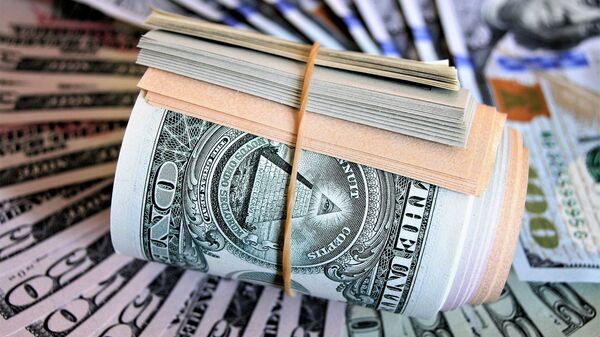On Sunday, the US Federal Reserve, which functions as the country’s central bank, lowered its benchmark interest rate to an effective 0% after Washington declared the COVID-19 pandemic a national emergency and states and cities across the country began shuttering shops, transportation and public arenas.
However, that did little to stem the collapse of confidence in the market, as the New York Stock Exchange registered a colossal drop Monday. The Dow Jones Industrial Average fell almost 3,000 points, its largest single-day drop in history, and oil prices lost 8% of their value, falling below $30 a barrel.
“The Fed has been revealed to be swimming naked,” Tom Luongo, geopolitical analyst and publisher of the Gold Goats 'n Guns newsletter, told Radio Sputnik’s Political Misfits Monday.
“The federal banks don’t have the tools to fix what the problem is, because the problem is bigger than the central banks.”
“The 2008 financial crisis was bigger than one central bank - the Federal Reserve - and it was necessary to create coordinated bailouts across multiple central banks in order to stop the contagion,” he noted. “This year, we’re already at that point and beyond that because the Fed did announce coordinated swap lines” with the Bank of Japan, Swiss National Bank, the Bank of England, Bank of Canada and the European Central Bank (ECB).
“But the bigger problem here is that - you know, interestingly enough, you brought up the $1.5 trillion in ‘bailout money’ on Friday - they didn’t actually do that, they just opened up a repo facility, a huge, enormous repo facility, that no one came and bellied up to. $1.5 trillion was offered, but only $117 billion was actually used … The problem here isn’t the lack of dollars, it’s the lack of collateral. In order to do a repo transaction, you have to have a security you’re willing to post at that price, and no one was willing to do it.”
“They would rather hold on to the securities today, because they don’t know what’s coming tomorrow,” Luongo told hosts Bob Schlehuber and Jamarl Thomas.
“The Fed wasn’t offering high enough rates, and the problem is that this situation is now - the market wants higher short-term interest rates; demand for the dollars demands higher short-term interest rates in the overnight funding market, and it’s not there, because the Fed drops rates to zero. And now they’re going to print a whole bunch of money to do ‘quantitative easing’ and the rest of it, in order to try and keep things liquified. But that’s not actually the solution to the problem, any more than any other solution that the Fed has at its disposal.”
“The Fed is a bystander,” Luongo observed, noting that “this is happening around the Fed, it’s happening around the ECB. This is a bigger problem than them. The real markets, the offshore dollar markets - the real financial markets - the Fed is a bystander, and they don’t have any control over this.”
“What we’re going to see, over the course of this crisis … what’s really on trial here is government itself. All of these institutions that we have put all of this faith in and all of this money in and all of this time in that we’ve spent is going to be - the confidence in it will be destroyed by the time this is over,” Luongo said. “And with good reason, because they are incompetent, and this kind of socialized, cartelized, corporatist banking system that we have is absolutely anathema to human progress and is destroying the lives of normal people around the world - and has been for a hundred years now.”

